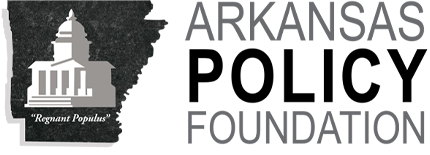Government, in order to be lean and effective, needs to be infused with market forces; less of a monopoly provider of services; and measured for accountability and performance. The most effective government concentrates its resources in achieving a core mission aimed at carrying out essential functions. (Murphy Commission, 1998)
(January 2009) The economy has entered the second year of a recession that started in December 2007. Families, individuals and private enterprises across Arkansas are making tough choices in hard economic times by restructuring to make ends meet. One exception is state government, which continues to raise taxes and spending levels, expand programs and restrict per capita income, ranked second or third worst in the U.S. for most of the postwar era.
The Murphy Commission, a Policy Foundation project spent three years (1996-98) reviewing state government. Enacted Commission recommendations include a reduction in the state capital gains tax rate, charter school expansion, fewer school administrators and modest accountability and transparency reforms in the K-12 public school system. Many Commission recommendations have not been addressed, and can serve as a blue print for Arkansas in hard times. This is important because the current recession could emerge as the longest since the Great Depression (August 1929 to March 1933).
Commission recommendations are largely unpopular with the government class. But they would save working Arkansans hundreds of millions of dollars by delivering services in a more efficient manner. Arkansas government should provide essential functions in a more cost-effective manner before any taxes are increased on the people.
How To Save A Half-Billion Tax Dollars In A Decade
Enacting only three recommendations would save more than a half-billion dollars in 10 years.
- Restructure all public education co-ops into a single professional K-12 educational service center under the Director, Department of Education. The center shall be called the Arkansas Educational Resources and Services Center (hereinafter the AERSC). Estimated savings: $370 million over a 10-year period.
- Restructure all K-12 public school districts into not more than 134 administrative units defined as “one superintendent and an associated superintendent’s staff.” This recommendation does not require the consolidation or annexation of any school districts. Nor does this recommendation require any reduction in teaching positions or non-certified, non-administrative positions in any district. Additionally, no district transportation systems will be impacted and no school sites will be closed. Every school can keep its mascot, football and basketball team and preserve long-standing rivalries with other schools. Estimated savings: $170 million over a 10-year period.
- Restructure Arkansas’ five Retirement Systems under one agency: the Arkansas Public Employees Retirement System. Sixteen states, in 1998, had one agency that managed more than one plan (from 2 to 8). The restructuring of management should result in consistent administration and policy. Estimated savings: $28 million over a 10-year period.
The Commission estimated total savings from the three recommendations of $568 million over a 10-year period.
The Anti-Reform Opposition
The three recommendations have not been enacted for two reasons:
- Some government sector employees employed by co-ops, school districts and retirement systems oppose restructuring.
- Elected officials oppose restructuring for ideological or personal reasons, or fear the opposition of government sector employees.
Conclusion
Arkansas is facing perhaps the worst recession in the postwar era. Arkansas families, individuals and private enterprises are making tough choices by restructuring to make ends meet. State government should restructure operations before raising taxes on the people. These reforms—a blueprint for hard times—should start with restructuring education co-ops into the Department of Education; school district administrators into administrative units; and the five retirement systems into one system. The Murphy Commission (1998) estimated savings of $568 million in a 10-year period.









